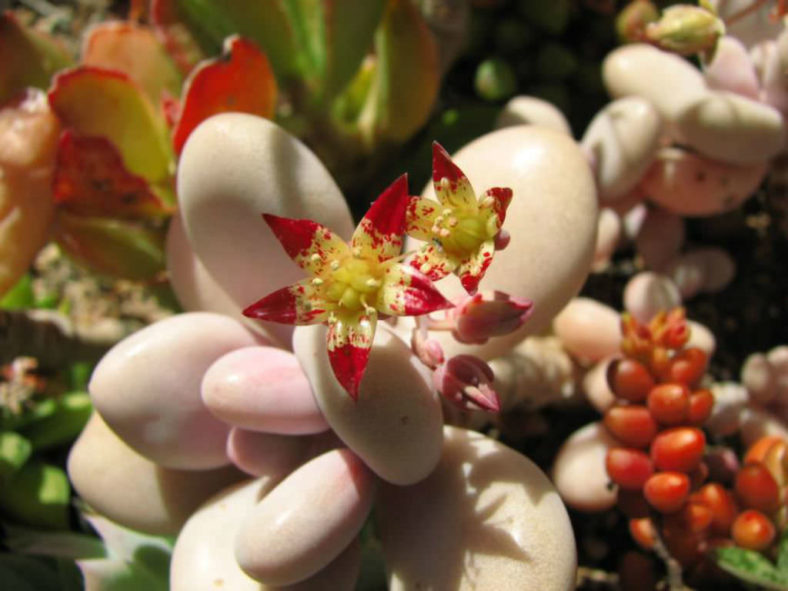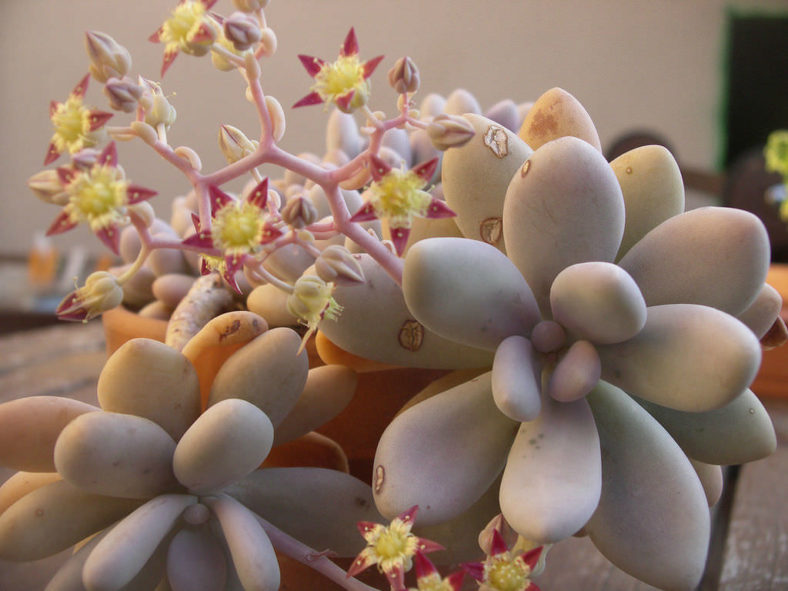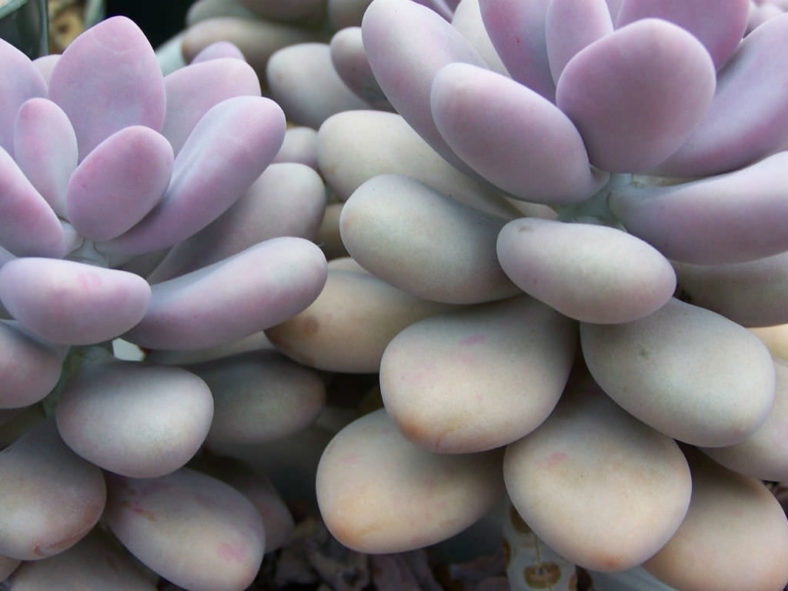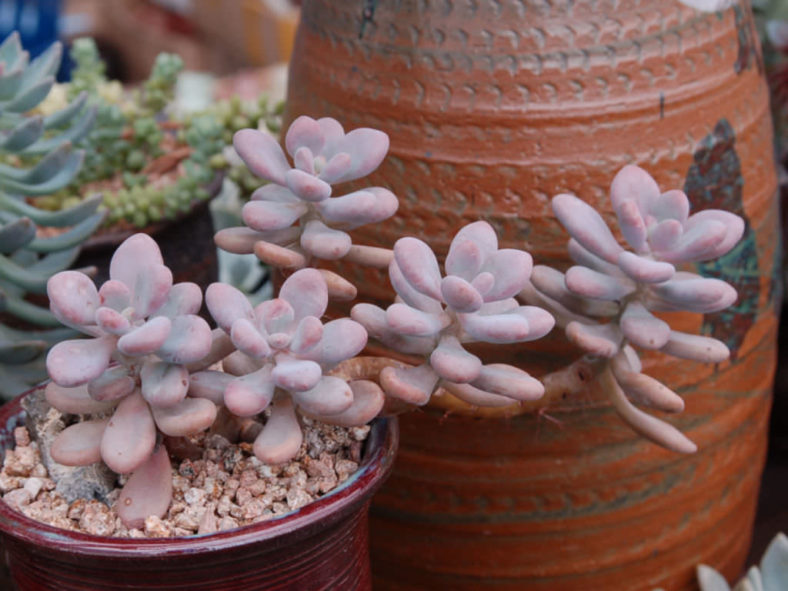Scientific Name
Graptopetalum amethystinum (Rose) E.Walther
Common Name(s)
Jewel-leaf Plant, Lavender Pebbles
Synonym(s)
Echeveria amethystina, Pachyphytum amethystinum, Sedum amethystinum
Scientific Classification
Family: Crassulaceae
Subfamily: Sedoideae
Tribe: Sedeae
Subtribe: Sedinae
Genus: Graptopetalum
Etymology
The specific epithet "amethystinum" (pronounced "am-eth-ee-STEE-num") means "of the color of amethyst, amethyst green" and refers to the often amethyst-like color of the leaves of this species.
Origin
Graptopetalum amethystinum is native to Mexico. It grows on rocky cliffs in Sinaloa, Durango, Zacatecas, and Jalisco at about 6,400 feet (1,950 m) above sea level.
Description
Graptopetalum amethystinum is a beautiful, slow-growing succulent with erect to decumbent or pendent, sometimes basally branched stems, each bearing a rosette of thick, fleshy, rounded leaves at its end. The stems can grow up to 1 foot (30 cm) long, while the rosettes can reach a diameter of 6 inches (15 cm). The leaves are rose-colored at first, but become grey as they mature and have a powdery coating.
The star-shaped, 5-merous flowers appear in spring and summer, reaching a diameter of 0.7 inches (1.8 cm). They have whitish-yellow to pale yellow petals, with the upper face of the lobes marked with red cross-bands and the tips almost entirely red. The inflorescences are thyrses with 7 to 65 flowers, ascending to curved downward, and can grow up to 6 inches (15 cm) long.
Hybrids of Graptopetalum amethystinum
- Graptopetalum 'Purple Delight'
- ×Graptophytum 'Amphitryon'
- ×Graptosedum 'Blue Giant'
- ×Graptosedum 'Miul'
- ×Graptoveria 'Amethorum'
- ×Graptoveria 'Debbi'
- ×Graptoveria 'Margaret Rose'
- ×Graptoveria 'Opalina'
- ×Graptoveria 'Royal Flush'
- ×Graptoveria 'Snow Peach'

Hardiness
USDA hardiness zones 9a to 11b: from 20°F (-6.7°C) to 50°F (10°C).
How to Grow and Care
The rules for Graptopetalum care are similar to those for most succulents. All require lots of sunlight to look their best. They also require gritty, porous soil with excellent drainage. Water regularly over summer and let the soil dry out between waterings. Minimal water is required over winter. Overwatering causes root rot, and the plant can become infected with several pests. Fertilize once during the growing season with a balanced fertilizer diluted to 1/4 strength.
Graptopetalums are generally easily propagated by seeds, leaf cuttings, or offsets. Any rosette that breaks off can root and start a new plant. Even a leaf that drops off can quickly root below the parent plant and produce a new rosette. The new plant feeds off the leaf until it shrivels and falls off. By then, the new little plant had rooted and sprouted new leaves.
Learn more at How to Grow and Care for Graptopetalum.
Links
- Back to genus Graptopetalum
- Succupedia: Browse succulents by Scientific Name, Common Name, Genus, Family, USDA Hardiness Zone, Origin, or cacti by Genus
Photo Gallery
Click on a photo to see a larger version.


